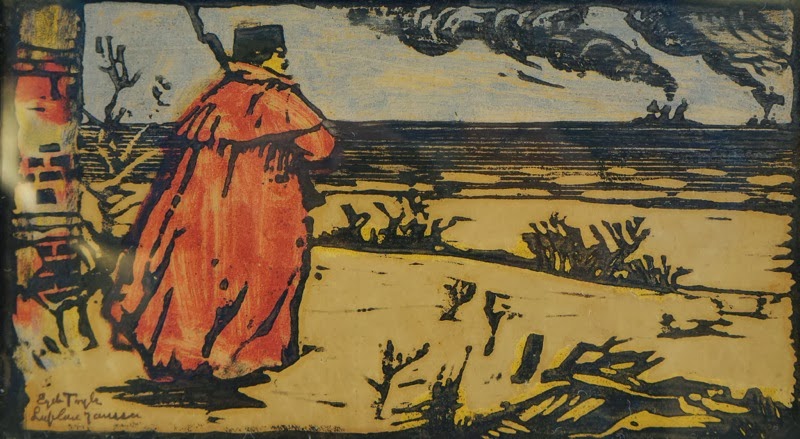American impressionist painter.
Inside the old New-York Aquarium with Emma Bormann in before posting I met Tschudy, the painter who shared with me the fascination for tropical fishtanks.
Plan of New-York aquarium in Castle Clinton Manhattan
The acquaintance leading me back to Dutch painter Gerrit Willem Dijsselhof (1866-1924) whom I introduced in an early Linosaurus posting (here*) and who is remembered best for his great number of Amsterdam Artis Zoo fish tank paintings (below).
Tschudy, without a doubt from Swiss ancestry, also used to sign Judy probably avoiding the very un-Anglo spelling of his family name. His parents will have been admirers of Simon Bolivar (1783-1830) the founding father and first president of several free and democratic South-American states like Panama, Venezuala and Peru giving his name to the state of Bolivia.
Lill Tschudi (1911-2004) the Grosvenor School and Claude Flight (1881-1955) trained Swiss printmaker will probably be related but that is beyond my knowledge and horizon.
Fulton Street Ferry underneath one of the pillars of Brooklyn Bridge
in 1914 by H.B.Tschudy.
Fulton Street Ferry went out of service in 1924 the year this photograph of Brooklyn, Manhattan and both connecting bridges (Brooklyn and Manhattan) was taken. Manhattan Bridge was completed in 1909. Lill Tschudi (1911-2004) the Grosvenor School and Claude Flight (1881-1955) trained Swiss printmaker will probably be related but that is beyond my knowledge and horizon.




















































